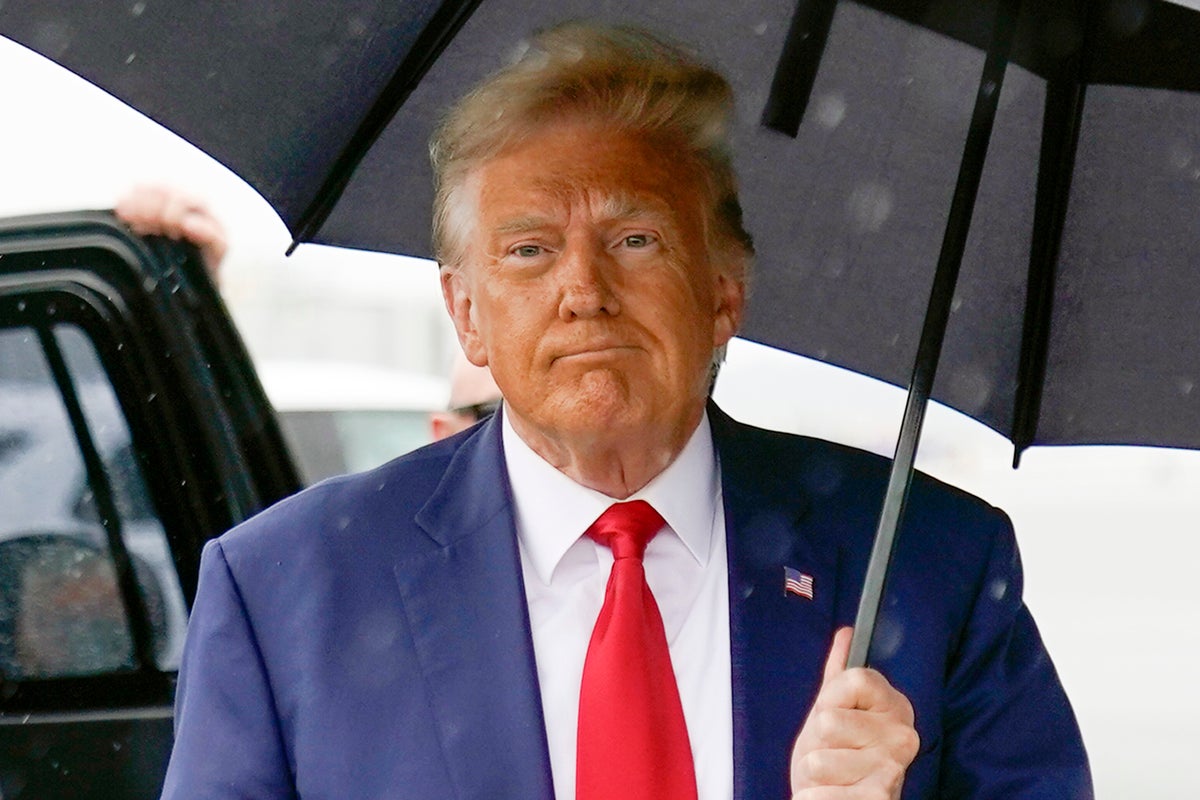
Donald Trump has been arrested again, this time in Fulton County, Georgia, after he was indicted on 13 charges related to his alleged efforts to overturn the 2020 election in the state.
On 14 August, Mr Trump was charged with violating the RICO Act as well as other charges alleging conspiracy, making false statements and filing false documents related to his combined efforts, along with 18 other named co-defendants, to change the election result.
The charges stem from an investigation by Fulton County district attorney Fani Willis into Mr Trump and his allies’ actions in the state in the days and weeks after the 2020 vote.
They included the infamous phone call that Mr Trump made to Brad Raffensperger, Georgia’s Republican secretary of state, in which the former asked him to “find” the 11,780 votes he needed to overturn Joe Biden’s victory.
The indictment also detailed a plot to install fake state electors.
The former president surrendered to authorities at Fulton County Jail on 24 August, where he was arrested and had his mug shot taken.
He and his co-defendants were expected to face arraignment on 6 September but on 31 August Mr Trump pleaded not guilty and waived his arraignment – a move that means he can now avoid what would have been his first televised court hearing.
Here’s what we know about the case and what’s next for Mr Trump in Georgia.
What happened at Trump’s arrest?
The Republican 2024 front-runner surrendered at the Fulton County Jail in Atlanta on the evening of 24 August, less than a day before the deadline he and his co-defendants were given.
In a Truth Social post on 21 August, Mr Trump announced his plans for surrendering: “Can you believe it? I’ll be going to Atlanta, Georgia, on Thursday to be ARRESTED by a Radical Left District Attorney, Fani Willis.”
Mr Trump’s attorneys, Jennifer Little, Drew Findling and Marissa Goldberg, had met with Ms Willis earlier that day to agree to the terms of his arraignment and a time for his surrender.
The ex-president reportedly meant to appear for his booking to coincide with the primetime conservative cable news – ensuring his appearance received the maximum amount of publicity.
Did officers take his fingerprints and a mugshot?
Like his previous arraignments, Mr Trump was fingerprinted, as is customary with criminal charges.
The ex-president did not have a mug shot taken at his previous three indictments because he is considered a notable enough person to mean an identifying photo was unnecessary.
However, Fulton County sheriff Pat Labat told WSB-TV earlier in August that Mr Trump likely would pose for a photograph because he would be treated like any other person.
His mugshot was duly released after his arrest on the evening of 24 August, immediately going viral on social media.
Former president Donald Trump is shown in a police booking mugshot released by the Fulton County Sheriff’s Office— (Reuters)
Each of Mr Trump’s co-defendants who surrendered, including Rudy Giuliani, Sidney Powell, John Eastman, Jenna Ellis and Mark Meadows, also had their mug shots taken.
Did he get bail?
Mr Trump agreed to a $200,000 consent bond order on 21 August, three days before he surrendered.
The bond stated that Mr Trump was not allowed to communicate with witnesses or co-defendants except through his attorneys and was barred from making any “direct or indirect threat of any nature against the community or to any property in the community”, which included his posts or reposts on social media.
The consent bond said the ex-president is required to post 10 per cent of his bond amount and is mandated to make monthly reports to Fulton County’s pre-trail supervision officials.
In all his previous arraignments, the ex-president was released on certain conditions. But this is the first indictment he has been asked to post bond.
In his most recent federal arraignment related to his alleged efforts to overturn the 2020 election, Mr Trump was released on an appearance bond and under strict rules.
During the ex-president’s first federal arraignment for his alleged retention of classified documents, he signed a personal surety bond.
A bond is usually set to ensure a defendant appears in court. A judge can outright deny bond, which then requires the defendant to be taken into custody to await trial.
When is his arraignment and will it be filmed?
Mr Trump’s formal arraignment date was expected to take place on 6 September – almost two weeks after his arrest.
Georgia law is unique in that it requires cameras be allowed in judicial proceedings so long as the judge approves it, paving the way for Mr Trump’s first ever televised court hearing.
However, on 31 August, Mr Trump pleaded not guilty to the charges and waived his arraignment.
“As evidenced by my signature below, I do hereby waive formal arraignment and enter my plea of NOT GUILTY to the indictment in this case,” the court filing, bearing his signature, states.
Now, he will no longer appear for his arraignment.
Donald Trump pictured after speaking at the Steer N' Stein bar at the Iowa State Fair on 12 August— (Getty)
Several of his codefendants have also waived their arraignments. It remains to be seen whether the remainder will do the same.
Now, the world will have to wait before they can watch Mr Trump’s criminal cases unfolding live in court.
The New York indictment and both federal indictments did not allow cameras in the courtroom.
According to the law, Georgia believes televised proceedings promote “access to and understanding of court proceedings not only by the participants in them but also by the general public”.
In order for a judge to prevent cameras in the courtroom, they would need a compelling reason like a child victim or witness.







